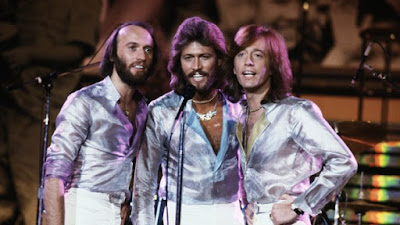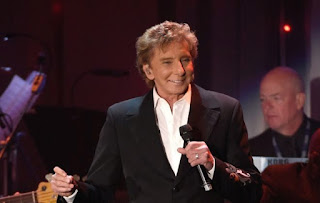"Down by the River" is a song by Canadian musician Neil Young, published on the studio album Everybody Knows This Is Nowhere. The song, recorded with the support of the Crazy Horse group, was also released as a promotional single. Young explained the story of the song in the notes of the compilation Decade (1977), where he mentioned that he had composed "Down by the River", "Cinnamon Girl" and "Cowgirl in the Sand" in his Topanga bed with 39.5 ºC of fever.1 2
History
The lyrics of "Down by the River" are apparently about a man who kills his lover, in the tradition of songs from the mid-1960s as "Hey Joe." 3 The reason he gives for killing her is that he directs him. at emotional heights that he can not afford.3 However, Young has given multiple explanations for the lyrics. In an interview with Robert Greenfield in 1970, Young commented that "there is no real murder in him. It is a plea, a desperate cry. "4 On the other hand, in a concert offered in New Orleans on September 27, 1984, Young affirmed that he represents a man" with a great problem of self-control "who surprises his wife by deceiving him , then he meets her in the river and shoots him.4 5 A few hours later, the sherrif arrives at his house and arrests him.5

"Down by the River" begins with two electric guitars followed by a line of bass and a box that enter after the beginning of the voice. The track also contains long instrumental interludes during which Young plays short notes with staccato on the guitar, to which he adds distortion.3
The critic Rob Sheffield, from Rolling Stone magazine, defined "Down by the River" and "Cowgirl in the Sand" the "masterpieces" of Everybody Knows This Is Nowhere, and described them as "long and violent improvisations, rambling on nine-minute mark without any traces of virtuosity, only staccato guitar blasts sounding as if Young were parachuted in the middle of the conflict between the Hatfields and the McCoy. "6 In the same guitar solo, the same staccato is repeated 38 times.
Neil Young
 Neil Percival Young (Toronto, Ontario, November 12, 1945) 1 is a Canadian musician and composer, widely regarded as one of the most influential of his generation.7 8 He began his musical career in Canada in 1960 with groups such as The Squires and The Mynah Birds, before moving to California in 1966 to found Buffalo Springfield with Stephen Stills and Richie Furay.9 In 1968 he started a solo career spanning over 45 years and 39 studio albums until 2016, with a continued exploration of different musical genres, especially during the 1980s, when he experimented with styles such as swing, blues and rockabilly.10 He entered the Rock and Roll Hall of Fame as a member of Buffalo Springfield and solo artist , described as "one of the best composers and performers of rock and roll" .8
Neil Percival Young (Toronto, Ontario, November 12, 1945) 1 is a Canadian musician and composer, widely regarded as one of the most influential of his generation.7 8 He began his musical career in Canada in 1960 with groups such as The Squires and The Mynah Birds, before moving to California in 1966 to found Buffalo Springfield with Stephen Stills and Richie Furay.9 In 1968 he started a solo career spanning over 45 years and 39 studio albums until 2016, with a continued exploration of different musical genres, especially during the 1980s, when he experimented with styles such as swing, blues and rockabilly.10 He entered the Rock and Roll Hall of Fame as a member of Buffalo Springfield and solo artist , described as "one of the best composers and performers of rock and roll" .8
His work is characterized by markedly personal lyrics, 11 sometimes with social criticism and anti-war positions, 12 and by his tenor-alto voice.3 Although he plays instruments such as piano, banjo and harmonica, 13 his work is characterized by a distinctive use of acoustic and electric guitars, and in particular by the use of a Gibson Les Paul of 1953 modified and nicknamed Old Black.14 15 His most recognized work is divided into two musical styles: the acoustic , with folk and country rock songs like "Heart of Gold" and "Old Man", 11 and electric, with rock and hard rock songs like "Hey Hey, My My (Into the Black)" and "Rockin 'in the Free World », performed mainly with the Crazy Horse group and characterized by a high distortion of sound.From the 1990s he adopted elements of styles such as grunge, and his influence in bands such as Nirvana or Pearl Jam earned him the nickname of "the godfather of grunge."
As a film director he published, always under the pseudonym Bernard Shakey, feature films such as Journey Through the Past, Rust Never Sleeps, Human Highway, Greendale and CSNY Déjà Vu.18 He is also a leading advocate of humanitarian and environmental causes, and in 1985 he founded Farm Aid with Willie Nelson and John Mellencamp to help economically the farmers of the United States at risk of social exclusion.19 A year later he founded with Pegi Young an educational organization for children with mental disabilities called The Bridge School, which finances the collection of the Bridge School Festival, a series of annual charity concerts.
Young married three times: in 1970 with Susan Acevedo; in 1971 with the actress Carrie Snodgress, with whom she had a son named Zeke, and in 1978 with Pegi Morton, with whom she had two children, Ben and Amber Jean.21 Resides in Broken Arrow Ranch, a property located in Redwood City, California and has not adopted the US nationality despite residing in the country for more than 45 years.









